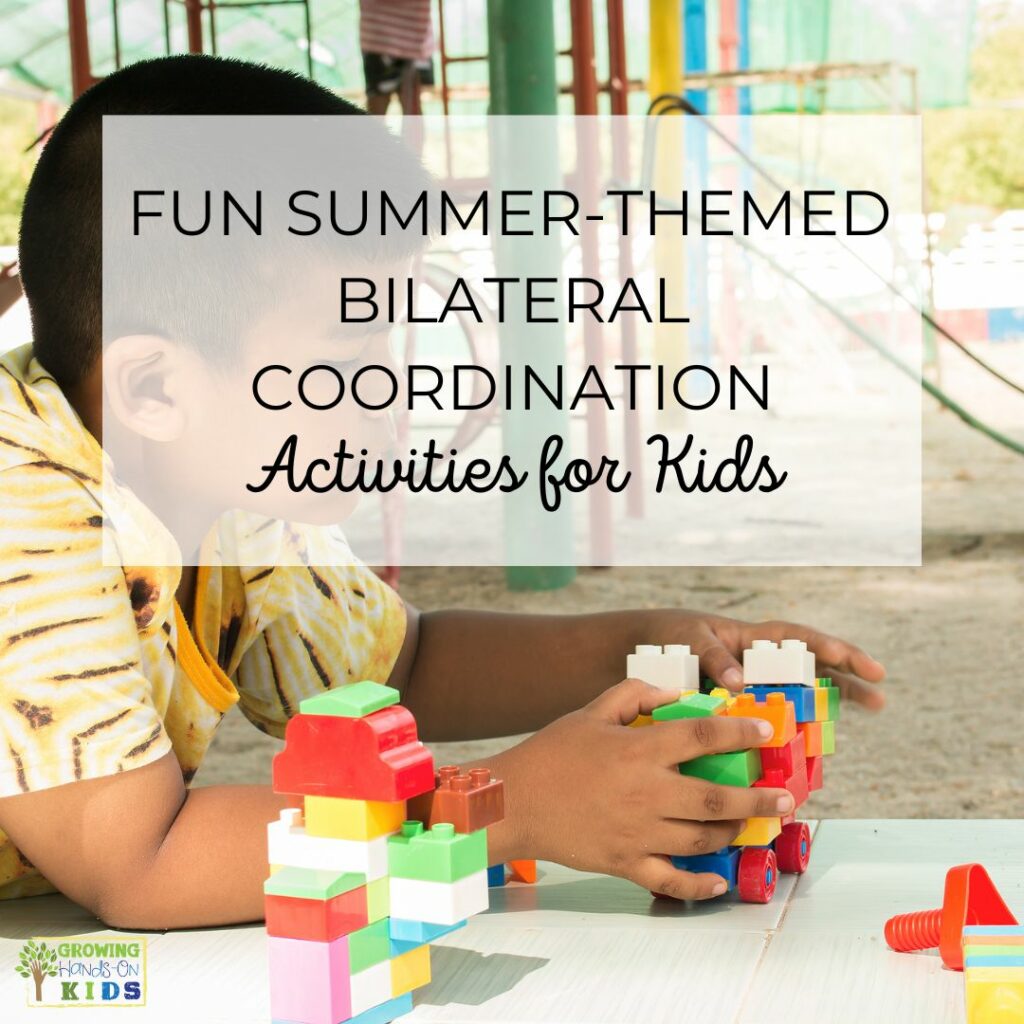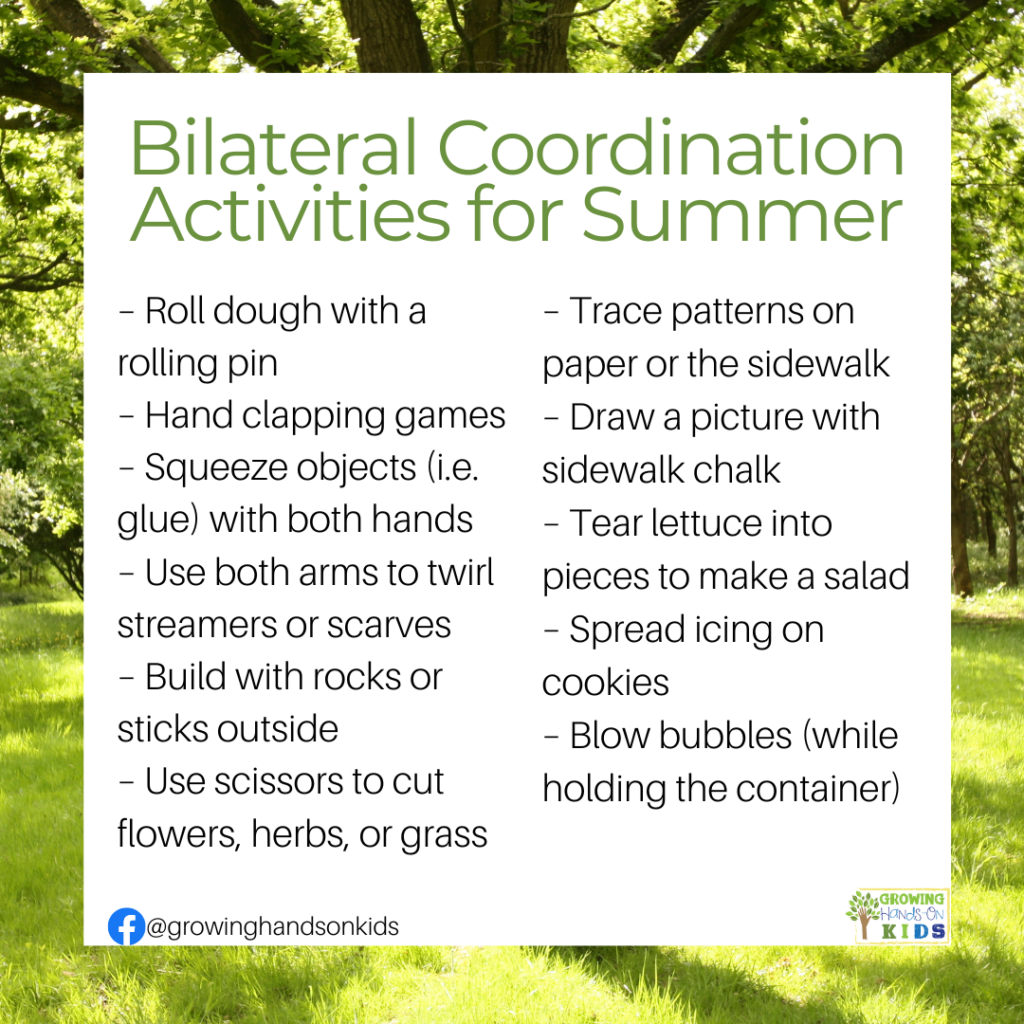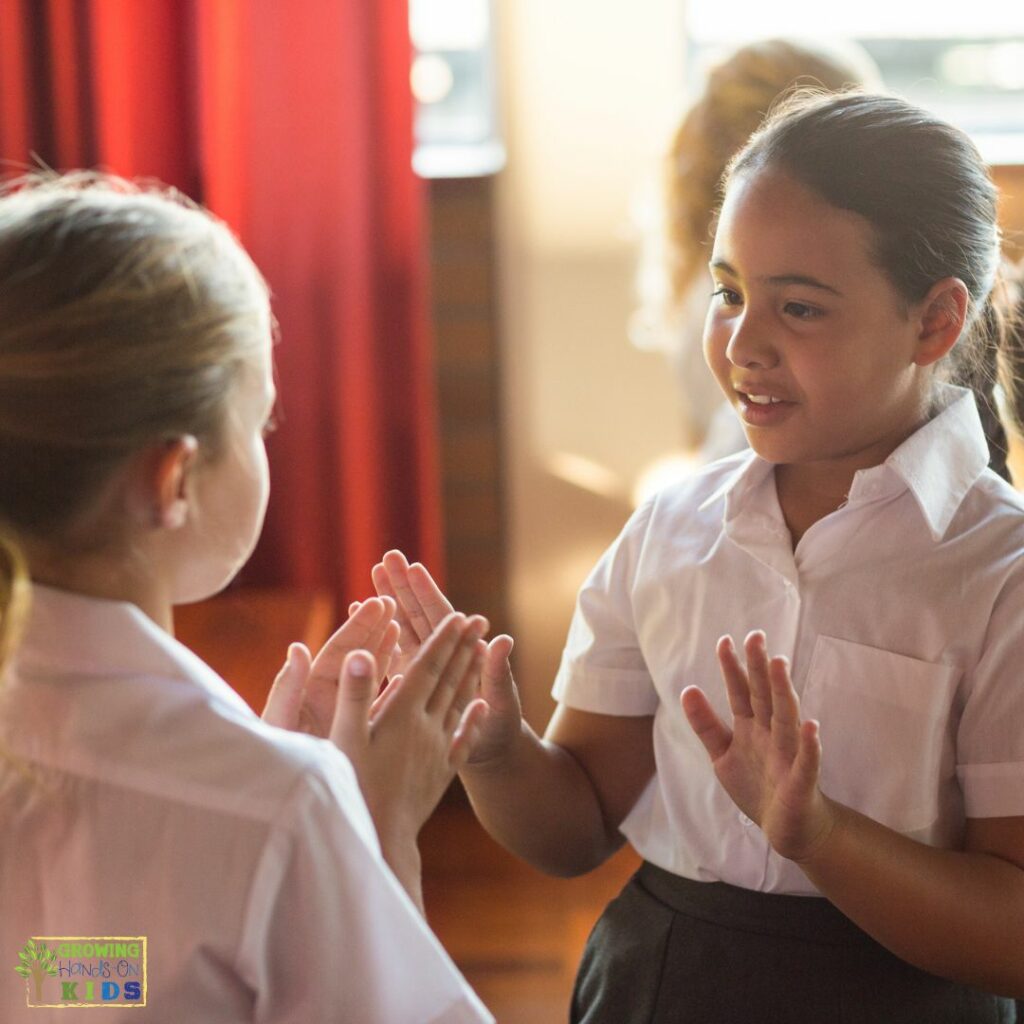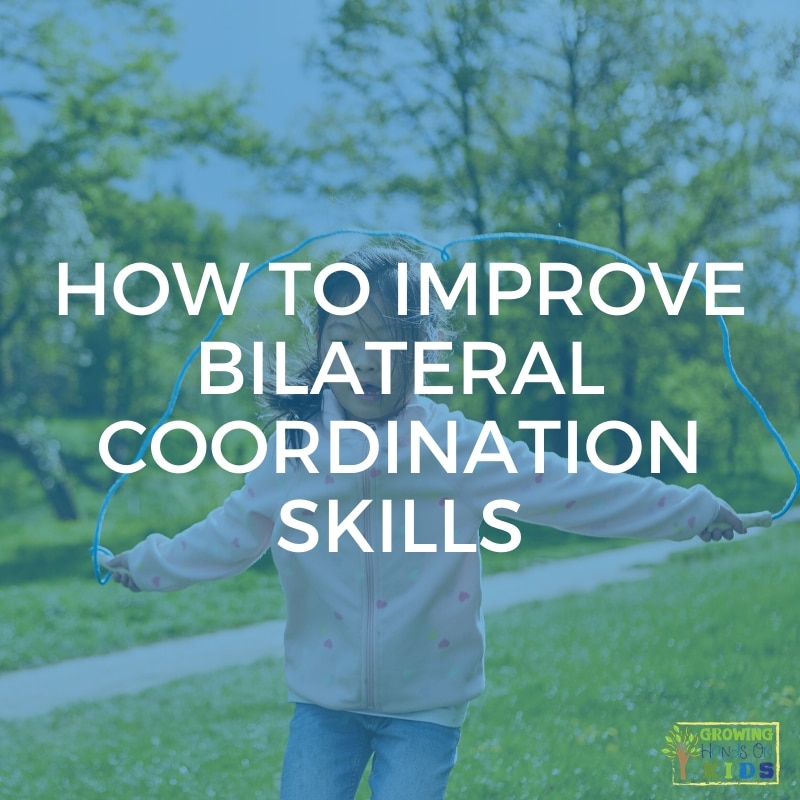Fun Summer Bilateral Coordination Activities for Kids
Affiliate and Referral links are used below to promote products I love and recommend. I receive a commission on any purchases made through these links. Please see my disclosure policy for more details. As an Amazon Associate, I earn from qualifying purchases.
Summer is a great time to work on activities that can help your child build their gross motor and fine motor skills. Let's take a look at some fun summer-themed bilateral coordination activities for kids.
Bilateral coordination table of contents
Summer-Themed Bilateral Coordination Activities for Children
These activity ideas are very easy to set up over the summer months.
Roll dough with a rolling pin
This can be with play dough, cookie dough, bread dough, etc.
Hand-clapping games
Here is a list of 29 classic hand-clapping games to get you started.
Squeeze objects (i.e. glue) with both hands
See my pre-writing line activity using a glue bottle.
Use both arms to twirl streamers or scarves
These scarves would be perfect!
Build with rocks or sticks outside
This can be open-ended play or you can give rock and stick building challenge ideas like building a house, making a picture of your face, etc.
Use scissors to cut flowers, herbs, or grass
Remember to use left-handed scissors with your leftie kiddos.
Trace patterns on paper or the sidewalk
Draw a picture with sidewalk chalk
Tear lettuce into pieces to make a salad
Spread icing on cookies
Blow bubbles while holding the container
Bubble machines are lots of fun, but you can add in some bilateral coordination practice by also supplying some bubble wand containers for children to blow their own bubbles.
Keep reading to find out a little more about bilateral coordination and why it is important for child development.
What is Bilateral Coordination?
Bilateral coordination is the ability to use both sides of the body either together or alternating movements in a coordinated way.
You'll start to notice a young baby developing bilateral coordination when they start to bring their arms to the middle of the body to play with their fingers or bring their feet up to play with their toes.
Crawling is an important milestone for bilateral coordination as it helps a baby to coordinate both sides of their body together. By 6 months old a baby can be expected to start rocking back and forth on their arms and legs and then creeping and crawling by 9-10 months old.
By 12-18 months you will start to notice a baby being able to clap their hands together and bang objects together using both hands. Children continue to fine-tune bilateral coordination movements and skills through preschool age and beyond.
There are 3 types of bilateral coordination that develop over time.
Symmetrical movements or both sides of the body doing the same movement.
Examples of this include throwing a ball, rolling out dough with a rolling pin, clapping your hands, pulling on socks,
Reciprocal movements or both sides of the body working together alternating movements.
Examples of this include walking, climbing, riding a bike, climbing the stairs, etc.
Different movements on each side (dominant hand vs. non-dominant hand)
Examples of this include using scissors (one hand holding the scissors, the other the paper), and writing (one hand holding the pencil, the other stabilizing the paper).
Why is Bilateral Coordination Important?
We need bilateral coordination in order to complete many gross motor activities including, hopping, jumping, running, ball skills, balance, riding a bike, and fine motor activities such as drawing, writing, building with blocks, and functional tasks such as threading blocks or beads, buttoning tasks, using a knife, or playing a musical instrument like the drums, piano, or string instruments.
Good bilateral coordination skills mean that both sides of the brain are talking and working together.
For bilateral coordination to integrate well, you need the vestibular system and crossing midline.
Poor bilateral coordination skills can affect a child's overall gross motor development which can affect fine motor, cognitive, and academic skills later on in life.
Poor bilateral coordination skills can look like this:
- Challenges coordinating both sides of the body together
- Avoidance of crossing midline
- Not having a preferred hand for activities with possible left vs. right confusion
If you suspect your child has poor bilateral coordination, talk to your doctor and ask for an Occupational Therapist (OT) evaluation. OTs are trained to look at all the underlying skills needed for bilateral movements and can help support your child through strengthening and bilateral integration activities to help improve their bilateral coordination skills.
Get a Printable Handout of Summer Bilateral Coordination Activities
You can get a free handout of these summer bilateral coordination activity ideas, along with all my other summer development activity ideas by signing up for my email newsletter below.
Enter your e-mail address below and click the green “Click Here” button. You will need to check your e-mail to confirm your subscription (double-check your spam folder).
Once you confirm using the link provided in your e-mail, the download will automatically be sent to your computer. Double-check your “downloads folder” and save it to your computer for future reference.
You'll also be receiving my fine motor tips email series. You can unsubscribe at any time.
If you've already subscribed to GHOK before, no worries, you aren't actually subscribing again. By entering your email below, it just lets my email provider know which printable to send to you. You won't receive replicate emails from me.
Download the Free Printable
Subscribe to Growing Hands-On Kids for weekly newsletter activity tips and ideas, just like this one. You'll also be the first to know about new printables, resources, and product recommendations.
As a free gift, I'll send you the Summer Developmental Activities for Kids printable download!
By downloading this free printable, you are agreeing with my site's terms of use and privacy policy as detailed here.
References:
Buchele Harris, H.; Cortina, K.; Templin, T.; Colabianchi, N. and Chen, W. (2018). Impact of Coordinated-Bilateral Physical Activities on Attention and Concentration in School-Aged Children. BioMed Research International. 2018. 1-7. https://dx.doi.org/10.1155/2018/2539748
Magalhaes LC, Koomar JA, Cermak SA, Bilateral motor coordination in 5- to 9-year-old children: a pilot study. American Journal of Occupational Therapy 1989;43(7): 437-43. https://pubmed.ncbi.nlm.nih.gov/2750858/
Prajakta Karambe, Sanjivani N. Dhote, Tushar J. Palekar. ASSESSMENT OF BILATERAL COORDINATION USING BRUININKS: OSERETSKY TEST OF MOTOR PROFICIENCY, 2nd EDITION (BOT-2), IN 5 TO 15 YEARS SCHOOL GOING CHILDREN. Int J Physiother Res 2017;5(3):2026-2030. DOI: 10.16965/ijpr.2017.129
You May Also Like:

Heather Greutman, COTA
Heather Greutman is a Certified Occupational Therapy Assistant with experience in school-based OT services for preschool through high school. She uses her background to share child development tips, tools, and strategies for parents, educators, and therapists. She is the author of many ebooks including The Basics of Fine Motor Skills, and Basics of Pre-Writing Skills, and co-author of Sensory Processing Explained: A Handbook for Parents and Educators.





